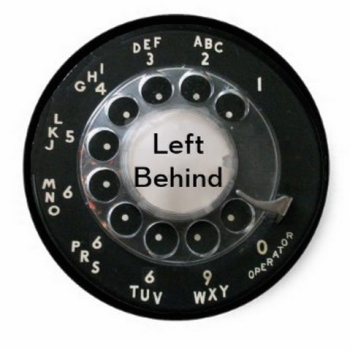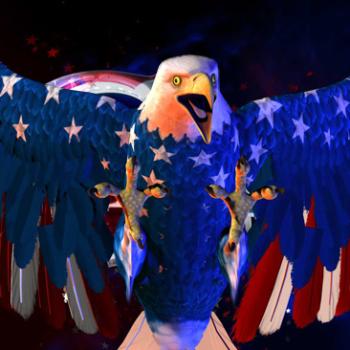The first book I ever read on my own — the first book-book, one with more words than pictures — was The Lion, the Witch, and the Wardrobe.
Most of my memories from that age are a blurry mess, but I still recall this vividly. I cried when I reached the end. The story was over and I did not want it to be over. I did not want to leave that story or its world or the people in that world, but there were no more pages to turn and it had to end and so I cried because I had to stop.
My mom, I remember, was pretty terrific just then. She gave me a big hug and told me she was proud that I had read a big person’s book all by myself. And then she told me the most wonderful thing. There were more books. Many more. So many that I could never reach the end and never run out of pages to keep turning.
Soon after that we went to the library. I’m sure she’d taken me there many times before,* but I hadn’t realized what it was until this trip, until I went there as a reader of books. Before it had just seemed to be an ordinary building, a regular wardrobe. Now I knew that it was a magical place, bigger on the inside than on the outside.
But the second big-person’s book I read wasn’t from the library. It was from my older brother’s bookshelf at home, from the same boxed set of paperbacks as the first book. I read Prince Caspian, and then The Voyage of the Dawn Treader. There were seven books in this series, and I remember thinking how wonderful that was — seven books would last me forever.
And they nearly did, because I soon learned that books could be re-read, and I re-read those books in C.S. Lewis’ Narnia series many times over before finishing grade school.
That is why, to this day, 40 years after first meeting her in the first sentence of the first book-book I ever read, I still have strong feelings about Susan Pevensie.
Not strong feelings for her — I don’t mean a reader’s crush — but about her. Anyone who has read and loved Lewis’ Narnia books has encountered the problem of Susan. Her story ends poorly. What happens to Susan is just wrong.
Lewis, it seemed, had one more Lesson he wanted to teach, and he chose to make Susan the victim of that lesson. What he does to Susan isn’t fair. Worse than that, one can’t help but think that what he tells us about Susan isn’t true.
One finds oneself defending Susan against the author, protesting that he doesn’t understand. The condemnation of Susan at the end of the Narnia series misses its mark, circling back around to fall on the author instead. C.S. Lewis mistakenly wrote that Susan had turned her back on Narnia, but what it really seems is that Lewis had turned his back on Susan.
If you’ve read those books, then you know just what I mean. If you’ve read those books and you somehow don’t know what I mean, then I’m liable to be cross with you.
We don’t need to discuss this in greater detail here because Ana Mardoll has been exploring the Narnia books with great depth and insight. She’s on Prince Caspian now, and whether you are a friend of Narnia or, like Susan (allegedly), “no longer a friend of Narnia,” you’ll want to read Ana’s entire series on Lewis’ Chronicles.
You should also read this very agreeable disagreement on “The Question of Susan,” in which Hapax and Kit Whitfield try to make sense of Lewis’ damnable damnation of Susan.
And then there’s Neil Gaiman’s melancholy and strange short story, “The Problem of Susan,” wherein he confronts the problem and, in a sense, compounds it by pushing the happy ending poor Susan deserved even further out of reach.
All of these remind us that the problem of Susan exists only because Lewis succeeded before failing. This only happens when a good story takes a bad turn. He gave us Susan Pevensie and made us care what happened to her, and then he told us that what happened to her was something implausible and unpleasant. We’re upset by this because she mattered to us — mattered too much for her to be discarded and punished just for the sake of another Lesson.
If Lewis hadn’t made us come to view Susan as a real person, we wouldn’t have minded so much when he stopped treating her like one.
That’s why Gaiman’s story — or even just the idea of his story — is so evocative. It reminds us that Susan is still out there. She didn’t die at the end of these books, after all. She, alone, didn’t die.
World War II was a long time ago, but she was just a child then. I suppose she’d be almost 90 by now. But then we read, over and over, that there was something in that Narnian air — air that she breathed for a whole other lifetime. So I suspect that even now she doesn’t look or feel quite like what one might expect from a 90-year-old woman. I suspect that if you met her now, you’d guess she was several decades younger than that.
And I suspect that if you had the chance to ask her, she’s have a few sharp thoughts about Mr. Lewis and his version of her story.
So, Ms. Pevensie, your highness, if you’re out there, I hope you’ll weigh in on this discussion. Most of all, though, I hope you’re well. And I hope you’re happy.
– – – – – – – – – – – –
* It wasn’t until many years later that I would realize that my mother was not just a casual visitor to our town’s library. She had helped to build it.
Our little town had a public library, but in Mom’s mind it was inadequate. It was a cluster of cramped rooms on the third floor of the same township building that housed the police station. It was too small to serve as a gathering place, too inhospitable to be a place for one to sit and read. And having to walk up three flights of stairs made it inaccessible to many of the older citizens who may have wanted — and, my mother felt, deserved — to make use of it.
And so my mother, who always had her big King James Bible next to a library book beside her chair, took her cue from the persistent widow in Jesus’ parable. The beautiful new public library — a sprawling, one-story building featuring the first wheelchair ramp our town had ever seen — was built, in part, because the mayor just wanted my mom and her little platoon of volunteers to settle down and leave him alone already.
She got a plaque from the borough — a “certificate of appreciation” decoupaged onto a wooden frame. It commended “________________,” with her name typed into the blank, for “his service and dedication to the community.” And with the same typewriter italics used to fill in her name, the town clerk had overstruck the last two letters of “his” to make it almost read “her.”
Mom never much cared for that plaque, but she was quite pleased with the new library. I was too, even if many times I found myself on a Saturday afternoon wishing I was outside riding my bike instead of in there, with Mom, gluing those little manila folders into the backs of books or shelf-reading to keep the place ship-shape.
It turned out Mom wasn’t done, either. The glorified closet that our church called its “library” also fell short of her standards. So did the one-room “library” at our private school.
The latter eventually came to occupy a whole wing of one of the old U-shaped Army barracks in which our school was housed (buildings once part of the World War II-era Camp Kilmer).
On one wall of that new, expanded library at the school, in the elementary section, was a lovely mural painted by my mother. It featured some of her favorite characters from children’s books, including the Cat in the Hat, Mary Poppins, Peter Pan, and Max and the Wild Things (the last of which turned out to be “controversial”).
The centerpiece of the mural was the lion Aslan, racing across a grassy field. And there, on Aslan’s back, rode Lucy Pevensie and her older sister Susan.












